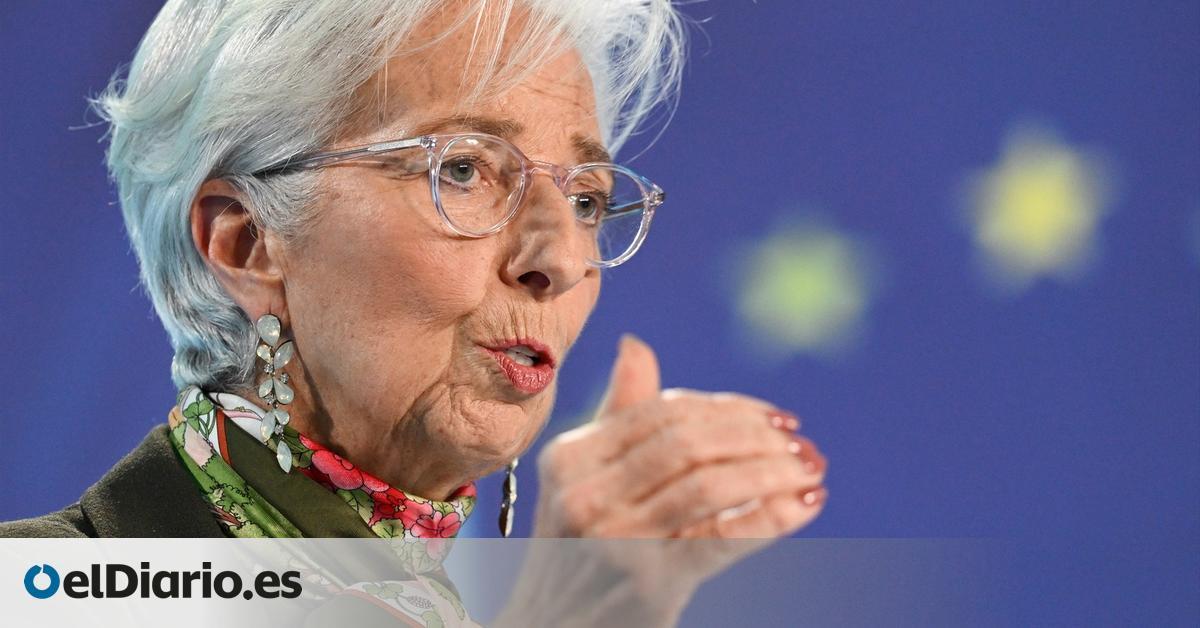
The European Central Bank (ECB) has been obsessed with another rise in interest rates of 0.5 points, up to 3.5%, despite the fact that it means increasing the risk of a banking crisis. The institution prioritizes its fight against inflation and fulfills its commitment to maintain aggressiveness in increasing the official ‘price’ of money.
The keys to the end of ECB debt purchases: the other way to raise interest rates
Further
In contrast, to alleviate the existing uncertainty in the financial system after the fall of Silicon Valley Bank or the problems of Credit Suisse, the ECB assures in its statement after the meeting of the governing council on Thursday that “it is closely monitoring the the current tensions in the markets and is prepared to respond as necessary to maintain price stability and financial stability.
In addition, it defends that the eurozone banking sector has “resilience capacity and solid capital and liquidity positions.” Despite this, he opens the door to provide more liquidity to the system. “The ECB has all the necessary monetary policy instruments to provide support to the financial system if necessary and preserve the smooth transmission of monetary policy,” reads the note.
maintains aggressiveness
“The ECB has a hammer in its hand —designed to crush demand— and all it sees are nails, but in this supply-side inflation crisis [relacionada con la energía, o con los cuellos de botella en el comercio mundial] we would have to tighten the nuts ”, laments Carlos Martín Urriza, director of the CCOO economic cabinet.
“The wild solution to price increases is being offered, despite the fact that monetary policy is quite ineffective, and on top of that it is causing liquidity problems in the banking system. In the 21st century it cannot be that there is no other solution, to control the profits of companies, which are transferring the increase in costs to sales prices, raising margins, and that only action can be taken on the ‘price ‘ of money”, continues this expert.
The ECB’s governing council faced this Thursday the dilemma of fulfilling the commitment it had made at its February meeting to raise the ‘price’ of money another 0.5 points or to moderate the aggressiveness of its fight against increases in prices and prioritize financial stability. So far, he has found no reason to change course. And he has preferred to keep his word and not reveal great uncertainties.
“This is exactly why the ECB’s commitment to another rate hike for this Thursday’s meeting was a bad idea. You never know what is going to happen, or how events will unfold. Therefore, [las decisiones de la institución] they must be based on data and be prudent, instead of making unnecessary aggressive commitments ”, summarized before the meeting Philipp Heimberger, an economist at the Vienna Institute for International Economic Studies.
At least this time, ECB President Christine Lagarde has avoided making another rate commitment in the coming months. “It is not possible at this time,” she said at the press conference after the meeting of the governing council.
The great paradox is that it has not been the suffocation of mortgaged families, nor the economic recession, nor the increase in unemployment that the central banks are pursuing with their policies that have opened this debate. They have been, again, the banks.
The turmoil in the stock markets and debt markets in recent days, after the fall of Silicon Valley Bank and Signature Bank in the United States, have been the first serious warning of the consequences of the vertical rise in interest rates of the central banks. In July, the ECB was still holding the ‘price’ of money at 0%.
The increase of three and a half points in these reference interest rates [la Reserva Federal de Estados Unidos ha sido todavía más agresiva] in less than a year it has increased the interest rates of all kinds of debt in the financial markets. And that means that in general the debt portfolios of banks, insurance companies or investment funds have lost a lot of value at once.
In the debt market, purchases raise the price and lower the interest rate. And vice versa: sales lower the price and raise the interest rate. This is what has been happening on a massive scale in recent months due to the decisions of the central banks.
This market situation is precisely what has triggered the crisis in Silicon Valley Bank and what threatens to derail other entities, by generating liquidity tensions. In Europe, the fear caused by the problems of the Swiss bank Credit Suisse has led it to request 50,700 million euros of liquidity from the central bank of its country.
more vigilance
What Christine Lagarde has admitted is that from now on the institution will closely monitor the tensions in the financial system, and that the forecasts for economic growth and inflation that she has published this Thursday are practically useless because they do not include the turbulence of the last days.
Inevitably, this latest rise in interest rates is reminiscent of the big mistakes the ECB made with similar increases in 2008, just before the Great Financial Crisis, and then in 2011, in the midst of the debt crisis.
Source: www.eldiario.es

